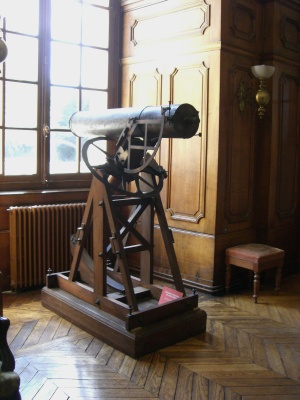Oh, how I wish I could have been there.
At least I can take comfort in the fact that while you all were talking about how to 3-quatize Chern-Simons, I was staying here with Jens Fjelstad actually doing it. ;-)
(Okay, I admit there still remains more to be done…)
Concerning the question “What exactly does extended CS theory assign to a -dimensional space?”, and regarding Bruce’s remark that he has a good idea about what the answer is (for Dijkgraaf-Witrten theory, ast least, I think):
I happen to mention this in the motivating introduction of this talk. The point I would like to make is that:
a) answering this question should not be a matter of guessing and making consistency checks.
b) rather, if CS theory is suppoosed to be a 3-functor, then
b i) there should better be a 3-functorial way to conceive the CS action, i.e. to rewrite the Chern-Simons functional as a 3-transport;
b ii) and there should better be a systematic way to pass from such a 3-functorial action to the corresponding 3-functorial QFT
b iii) such that this spits out the right result, not just the values on points, etc, but the entire quantum 3-functor.
Incidentally, that talk of mine is precisely about the issue of identifying the right classical 3-transport which underlies Chern-Simons.
Unfortunately Bruce’s result, which he alluded to, is still top secret, but we have a pretty good idea how it can be obtained by systematically quantizing CS-theory in the context of the “quantum charged -particle” which I keep talking about #.
Incidentally, it’s all about push-forward. The quantum propagation -functor should be a certain push-forward to a point of the classical parallel transport -functor.
This one can usually explicitly compute, at least in principle, for all dimensions below top dimension. For instance one can find the D-branes that an open string couples to this way #.
For the top level dimension it seems naively like one runs into the need to invent a measure, as you mention. However, I think there are indications that if we really strictly follow the n-categorical dao, everything will take care of itself. The measure arises automatically from the way colimits work. (I checked this for a toy example of the 1-dimensional case here.)
(I am way behind with writing this stuff up. But I’ll keep mentioning it, since from time time somebody reads this, chimes in and starts collaborating. Last time this happened with David Roberts. I think we got a pretty cool paper out of that collaboration.)


Re: This Week’s Finds in Mathematical Physics (Week 255)
Anyway, Lurie and Hopkins have worked out the … Unfortunately this work is not yet written up.
With Hopkins’ record, don’t hold your breath. On the other hand, Lurie did write a 619-page book as a grad student. This irrestible-force-meets-immovable object scenario could be a topic for wagering.